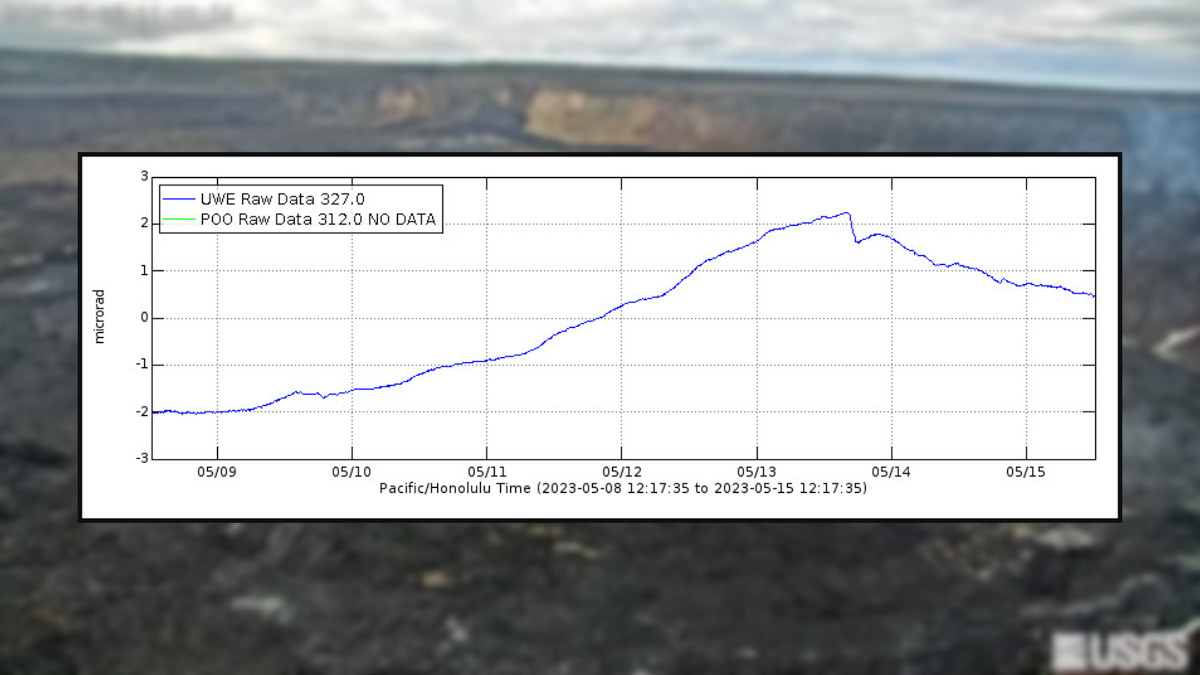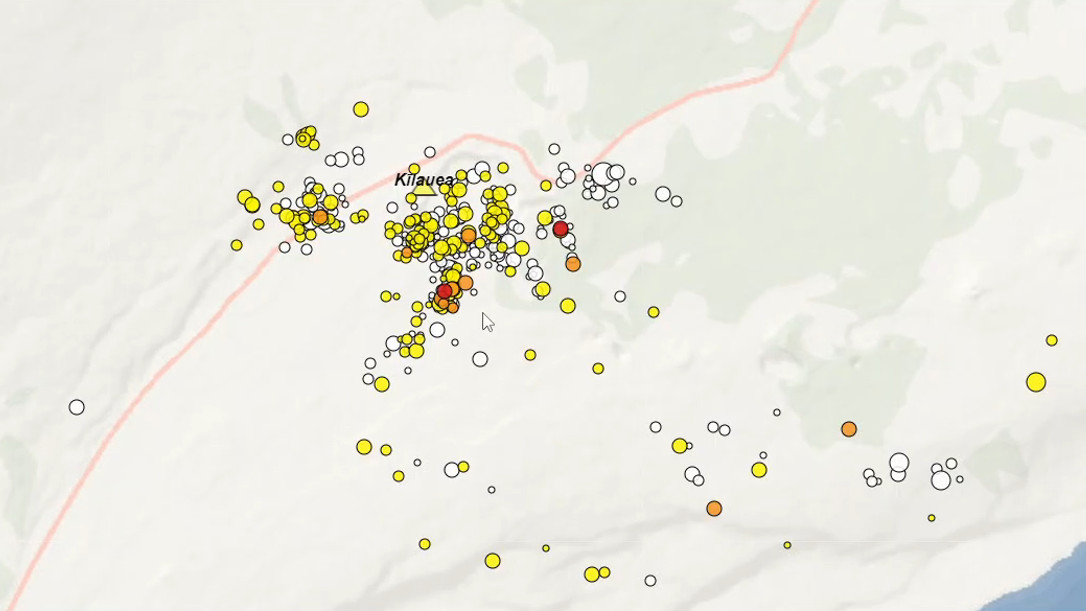
image shows the summit tilt on Monday, May 15, with a USGS webcam showing Halemaʻumaʻu at the summit of Kīlauea in the background
(BIVN) – Kilauea volcano is still not erupting. After a period of steady inflation, deformation has shifted to gradual deflation. However, the overall inflation is still higher than conditions preceding the January 5, 2023 summit eruption, and summit seismicity remains elevated.
From the USGS Hawaiian Volcano Observatory update on Monday, May 15:
Activity Summary: Kīlauea volcano is not erupting, and no active lava has been observed since March 7, 2023. Summit seismicity remains elevated. Deformation has shifted to gradual deflation. No significant changes have been observed along either of the volcano’s rift zones over the past day.
Halemaʻumaʻu Crater Observations: No active lava has been observed over the past day. A live-stream video of the crater is available (here on YouTube.com).
Summit Observations: Overall, inflation at the summit of Kīlauea is still higher than conditions preceding the January 5, 2023 summit eruption, although the rate of inflation decreased over the weekend with minor localized deflation. Small flurries of earthquakes continue irregularly beneath Halemaʻumaʻu, Keanakākoʻi Crater, and the southern margin of Kaluapele (Kīlauea caldera) since April 16. Overall, rates of summit earthquakes remain elevated, and additional earthquake flurries are possible. The most recent sulfur dioxide (SO2) emission rate of approximately 135 tonnes per day was measured on May 3.
Rift Zone Observations: No unusual activity has been noted along the East Rift Zone or Southwest Rift Zone; steady rates of ground deformation and seismicity continue along both. Measurements from continuous gas monitoring stations in the middle East Rift Zone—the site of 1983–2018 eruptive activity—remain below detection limits for SO2.
The USGS alert level for Kilauea remains at ADVISORY.


by Big Island Video News1:29 pm
on at
STORY SUMMARY
HAWAIʻI VOLCANOES NATIONAL PARK - After a period of steady inflation, deformation has shifted to gradual deflation.